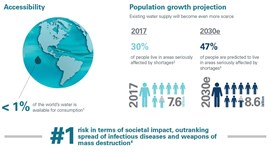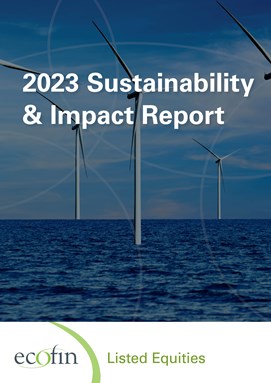2 weeks of COP marathon have ended on an emotional note
COP26 concluded with an emotional apology from the President Alok Sharma, “I apologise for how the process has unfolded. I am deeply sorry.” The world leaders have reached a deal, the Glasgow Climate Pact, albeit the last-minute objections from China and India, who wanted the language on coal to be watered down. In the first week, we saw some showy announcements as world leaders were opening the conference. The second one was mainly about closed-door negotiations to reach an agreement.
Success or failure?
A failure for some but success for others. Environmental activities see COP26 as a big disappointment as it has failed to provide more details on action plans and even considering all the current policies post-COP26 we are still far from the 1.5 path. Greta Thunberg has called it the festival of green washing. However, it has created good momentum with its headline announcements and it is sending a strong signal across industries that climate change policies and decarbonisation are here to stay and will be long term structural trends. Companies will accelerate their investment in decarbonisation strategies. COP26 has made good progress in certain areas from the last edition and it provides the only international climate framework. We have seen enhanced climate ambitions from some of the big polluters. Certain goals will depend on the countries’ ability to implement a concrete and detailed national decarbonisation strategy. The renewed cooperation between China and the U.S. could be also a game changer.
Glasgow Climate Pact – key points:
- We are seeing a shift of focus from 2° to 1.5°, especially after the recent versions of IPCC reports. The agreement has quantified officially a reduction of 45% of global emissions by 2030 relative to 2010 levels. Countries have reiterated their commitment to limit the global temperature increase by 1.5°C by 2100.
- It requires parties to revisit and strengthen 2030 targets in their NDCs by end of 2022 but also gives them to possibility to opt out if “different national circumstances” require so.
- It has included for the first time text on coal. It calls parties to “phase down unabated coal power and phase out inefficient subsidies for fossil fuels.” The language has been watered down, from “phase out” to “phase down”, on request of China and India. We saw countries announcing their commitment to stop financing coal power projects aboard at G20 and the Global Coal to Clean Power Transition Statement at COP26 but the change of language signals the dependency on coal of certain countries, especially given the current energy crisis.
- Developed countries have failed to provide $100bn of climate financing pledge established in Copenhagen but this has been renewed and a Climate Finance Delivery Plan has been established to support this. Certain countries new NDCs, such as India and South Africa, rely heavily on international climate finding and other countries, including Bangladesh, are facing severe physical risks.
- A major addition to the Paris Agreement rulebook providing an international framework on decarbonisation pledges and targets.
COP26 Announced Pledges & Agreements:
- Global Methane Pledge: it was announced in September as a collaboration between the U.S. and the EU and officially launched at COP26 to reduce methane emissions by 30% by 2030. Some large polluters including China, India and Russia have still not joined.
- Glasgow Leaders Declaration on Forests and Land Use: 105 countries pledged to halt and reverse deforestation by 2030.
- Glasgow Breakthroughs: More than 40 countries committed to achieve near-zero emission steel production by 2030, affordable low carbon hydrogen by 2030, zero emission vehicles by 2030 and clean energy as main power generation by 2030. China has only signed up to the hydrogen pledge.
- Global Coal to Clean Power Transition Statement: over 40 countries agreed to transition away from unabated coal power generation in 2030. China, India and Australia, the biggest coal producers, and consumers, have not agreed to the Statement. The U.S. also did not sign up but is ending coal financing abroad by 2022.
- Declaration on accelerating the transition to 100% zero emissions cars and vans: 31 governments, major automakers, cities and states have committed to phase out sales of ICEs by 2040 globally and by 2035 in leading markets.
- Declaration on accelerating the transition to 100% zero emission trucks and buses: 15 countries, cities and states have committed to enable 100% zero emissions trucks and buses sales by 2030 with an interim goal of 30% zero emissions vehicles sales by 2030.
- International Aviation Climate Ambition Coalition: 20 states have signed up advocating the International Civil Aviation Organisation to adopt emissions standards consistent with 1.5 degrees and to work towards net zero carbon emissions by 2050.
- Shipping: 14 countries have pledged to advocate for the International Maritime Organisation to adopt a net zero goal for shipping by 2023.
- Glasgow Financial Alliance for Net Zero (GFANZ): 450 financial institutions across 45 countries covering more than $130trn of assets committed to achieve zero emissions.
- International Sustainability Standards Board (ISSB): it has been established to develop a comprehensive global sustainability reporting standards.
Agreement on Art 6
Good progress; few issues have been addressed and countries have agreed on a framework. Some old CDM credits are allowed to trade under the current scheme and double accounting issues have been solved. The new “Sustainable Development Mechanism” is established. A framework for non-market based approach has been created. Countries are allowed to trade carbon credits as contribution to NDCs.











A Recap of COP 26